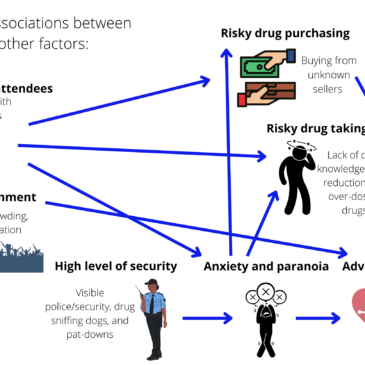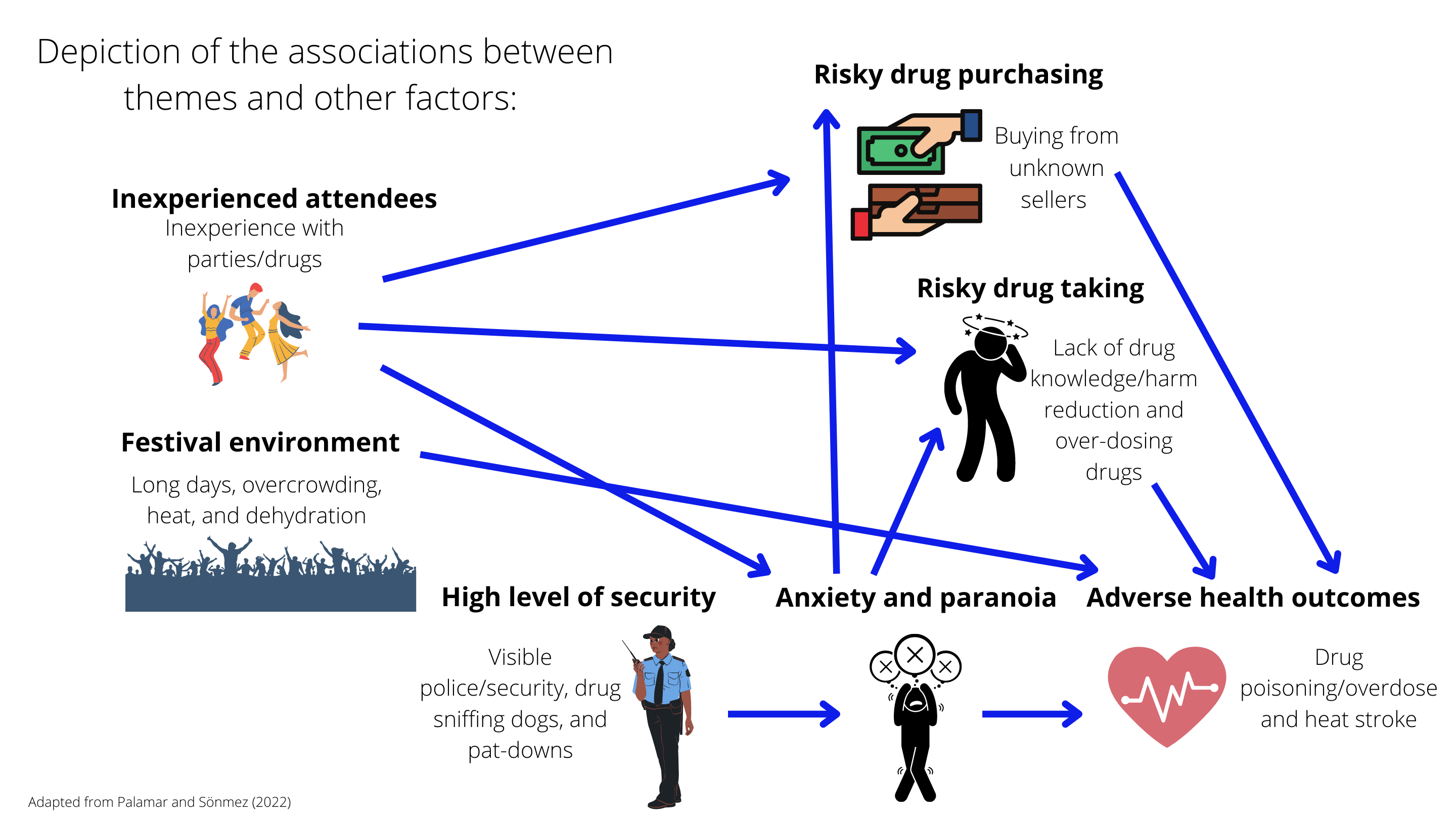Dance festivals, or live music events spanning multiple consecutive days, are becoming very popular in the United States and around the world. Festival attendees have higher rates of drug use and related adverse outcomes, including medical emergencies. However, few studies have examined why festivals are such high-risk environments. This week, STASH reviews a study by Joseph J. Palamar and İbrahim Sönmez that identified factors which influence drug use and related adverse outcomes at dance festivals.
What was the research question?
What factors influence drug use and related adverse outcomes at dance festivals?
What did the researchers do?
The researchers recruited 35 adult key informants via social media, message boards, harm reduction conferences, and snowball sampling. Key informants were either drug checkers (meaning that they tested drugs for adulterants such as new psychoactive substances, mainly at festivals and either as part of a volunteer organization or casually for friends), drug sellers, or otherwise had experience using or testing for new psychoactive substances in nightlife settings. The researchers conducted open-ended interviews. Later, they coded the interviews to search for dominant and/or repeated topics and themes.
What did they find?
The researchers identified four themes: (1) inexperienced attendees, (2) risky drug purchasing, (3) risky drug taking, and (4) environmental risk factors. The Figure provides more detail on these themes and shows how they relate to one another and to other factors. Generally speaking, key informants expressed concern that inexperienced attendees and the festival environment (including visible security measures) increase the risk for adverse health outcomes because they promote risky drug purchasing and risky drug taking. Anxiety and paranoia play an important role in this process, according to key informants.
Figure. Themes identified in key informant interviews and their association with one another and with other factors. Adapted from Palamar and Sönmez (2022). Click image to enlarge.
Why do these findings matter?
People who use drugs to enhance their festival experiences might be at risk for adverse health outcomes, especially if they are inexperienced using drugs in these settings and if the festival environment is marked by heat, crowding, and visible security. Festival promoters might want to educate patrons about how to avoid risky drug purchasing/taking, such as by encouraging attendees to make a plan to stay safe while using drugs, and allow for drug checking on the premises. In the U.S., some are calling for the Illicit Drug Anti-Proliferation Act (i.e., the RAVE Act) to be amended to encourage festival promoters to engage in these and other harm reduction activities.
Every study has limitations. What are the limitations in this study?
This study was conducted in North America. The findings might not generalize to other places where harm reduction services like drug checking and drug education are legal or condoned.
For more information:
If you are worried that you or someone you know is experiencing addiction, the SAMHSA National Helpline is a free treatment and information service available 24/7. For more details about addiction, visit our Addiction Resources page.
— Heather Gray, Ph.D., Caitlyn Matykiewicz, MPH, & Nakita Sconsoni, MSW
What do you think? Please use the comment link below to provide feedback on this article.





